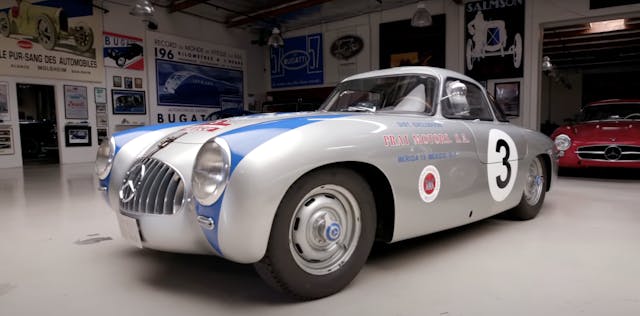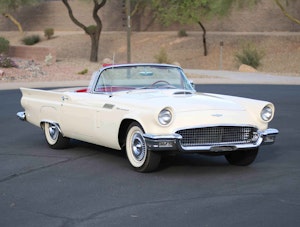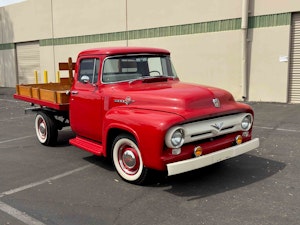Media | Articles
Take a ride with Jay Leno in the oldest Mercedes 300SL
In the pantheon of racing stands a streamlined, lightweight, uncompromising Mercedes Benz. The 300SL is the race car of the 1950s, at least when examining racing on a global scale. It’s a timelessly beautiful machine that incorporates a plethora of dedicated high-tech features (for the time). Yet it also somehow works as a road car. Jay Leno invited Mike Kunz of the Mercedes Benz Classic Center to bring along a very special Gullwing racer, and when Mike shows up he explains that it’s also the oldest 300SL—the prototype for the 1953 model year.
The origin story of the Gullwing has its roots in competition. Famous importer importer Max Hoffman saw a wider market for the W194 race car that was lapping tracks around Europe in 1952 and pushed for a road car based on it to be built. The result was the 300SL that hit showrooms and wowed the world in 1954.
There are more similarities than differences between the early race cars and the corresponding production cars. All sport the famous three-liter inline-six engine that features mechanical fuel injection. It’s a tall and long engine that Mercedes managed to fit under the sleek, low hood of the 300SL. To solve that problem, the engine was canted 50 degrees to the driver’s side and fitted with a dry-sump oiling system to ensure all the critical components got the necessarily lubrication under high lateral g forces. Between that dry sump and fuel injection, the engine found some grunt and turned out 225 horsepower.
That wasn’t as much muscle as the competition, but as Kunz points out while chatting with Jay, Mercedes focused on making sure the driver was comfortable and able to focus on handling the car rather than merely making it through the race. Getting into the driver’s seat is hardly a graceful affair due to the high door sills and low seating position. The road-going SLs ultimately made use of tilting steering wheels to ease ingress and egress, while the race cars had removable fixed steering wheels. Other than that simple provision for entry and exit, there was not much in the way of creature comforts. The windows on the Gullwing doors are fixed, and since there is no air conditioning, the driver and passenger are left to bake in a kind of futuristic greenhouse once everything is sealed up. The very small opening visible in the early race cars was a requirement for one driver, who wanted to be able to receive a cold bottle of Coke.
Marketplace
Buy and sell classics with confidence
Overall, the 300SL was a perfectly timed machine whose legacy is well-earned. Most of us will have to take Jay’s word on the driving experience, but it’s easy to believe that inline-six churns out appropriate torque to move the race car’s aluminum body around at decent pace. From the driving experience to the sound, this is one Benz that car lovers will adore forever.










